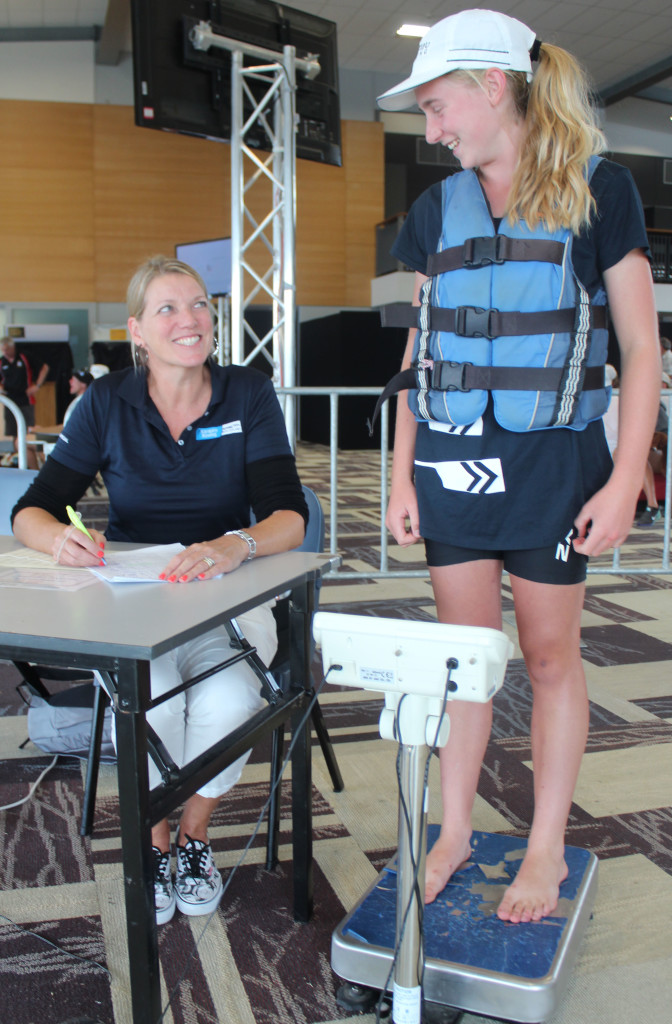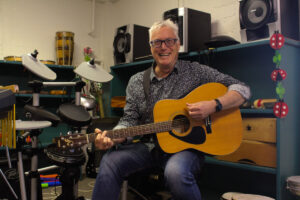Size does matter, weigh in your coxswains
From the break of dawn while most rowers sleep, when the lake cannot be seen, Harvey Nelson is getting ready to weigh the first coxswains of the day.

Setting up by moonlight is just another part of the job.
Every morning this week at Maadi volunteers including Sandra Groufsky and Harvey Nelson are in the weigh-in room from 6am until the last race of the day.
Nelson unlocks and sets up in the morning.
“You can see the moon reflecting on the lake, but you can’t actually see the lake,” Groufsky says.
Nelson is also one of the volunteers who weighs the coxswains before their first race.
“It’s a pretty simple system, it just needs to be followed,” she explains.
First you fill out a form: Date, Name, Club/School, Coach Name, Race No., Event Code, Alpha, Lane No.
Then you take the form to the first desk which is beside the scales.
The volunteer weigh-in official takes your form while you jump on the scales with your life jacket on and, if you are on the light side, a weight to push you over.
Once your weight has been written down and your form completed you go to the next desk to hand it in.
Then it’s off to prepare for your race.
This is the process each of the 278 coxswains at this year’s Maadi must undergo one hour before their first race of each day.
Because of the advantage to rowers in having a light coxswain, there is a minimum weight in place. Boys and girls U15, U16, and U17 must be 50kg or more. U18s must be 55kg or more.
If they do not meet the minimum weight they can make it up by adding weights, which are put on the scales with them.
Jessica Dicker is a 15-year-old coxswain for Wakatipu High School who is used to taking her place at the weigh-in centre. “Weigh-in is easy, I’ve never had a problem,” she says.
Nelson says they also do random spot checks throughout the regatta. This entails going down to the finish line and weighing the coxswains when they finish their race.




